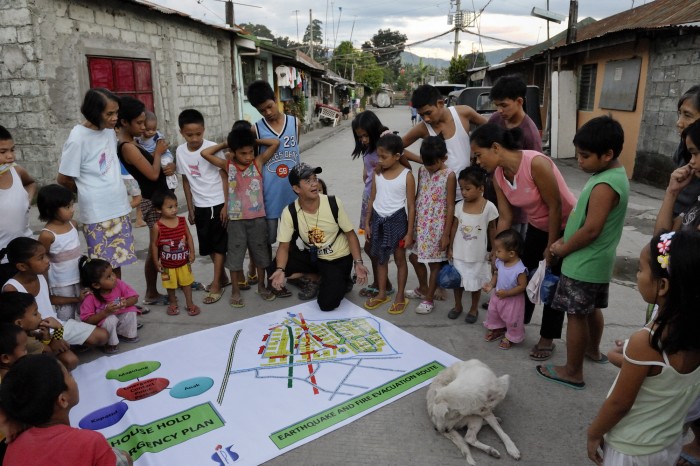Let’s no forget: locally-led response & Preventing and Mitigating Risks are REQUIRED for a Safer World

At the World Conference on Disaster Risk Reduction in Sendai last year, ACT Alliance committed:
To raise DRR awareness at the grassroots level by influencing local leadership and educating community members
ACT Alliance has a strong track record on enabling community resilience and Disaster Risk Reduction (DRR). To reduce future risks, here are examples from ACT partners around the world
This is how we reduce future risks:
1) LIVELIHOODS: Diversification of income sources and livelihood options
Mohammed Assen (40 years old), smallholder, living in Dereba, Ethiopia:
“A few years ago, I’d nearly given up hope. We’d lost everything in the drought. ACT member EECMY (Mekane Yesus Church) helped us to create the vegetable garden and the shallow well. They gave us seeds and saplings and showed us how to make compost. My wife found work in the tree nursery. And I was able to do a course in masonry. Not so long ago, we nearly starved to death. But now we have a future again!”
2) DRR EDUCATION: Ensuring that DRR education reaches to the most hard-to-reach areas and communities-at-risk
In Pakistan, Act Member CWSA is using a Mobile Knowledge Resource Center equipped in a truck to bring DRR education to remote, hazard-prone communities and help community members, teachers and school children to prepare for the event of a natural disaster.
3) EARLY WARNING SYSTEMS: Saving lives and livelihoods through early warnings
In Ethiopia, indigenous early warning knowledge and practices are documented, shared and combined with modern technology to strengthen and promote decentralized early warning and response systems by ACT member ICCO. This improves early warnings and increases the trust of communities in the information. Communities are taking action to avoid or reduce disaster risks.
4) LOCAL DECISION MAKING: Empowering community members on the ground to lead risk identification and take mitigation measures
In Myanmar, Village DDR Committees mobilise community and government resources to strengthen village infrastructure with support from ACT Member Diakonia.
5) INNOVATION: Collaborating with academia and other stakeholders
Diganjeng, West-Java, Indonesia:
In Indonesia, we invented a climate field school run by an ACT partner BfW, which demonstrates growing rice on bamboo rafts floating on the water, an innovation developed by the community. The 2 x 5 meter rafts can be made within half an hour, usually from bamboo trunks held together with netting. The cost of 3.80 euros is moderate and over a three year period, the rafts save a lot of money.
“What’s so remarkable about our village,” explains Tahmo Cahyono, the village chief, “is that during the rainy season, the fields are completely flooded. In the dry season, though, they are unbelievably dry.”
“Initially, we were ridiculed for thinking this up”, Feri Rianto, co-ordinator at the climate field school says. “But by the end of the season, the results we achieved were persuasive.”
___________
ACT Alliance is fully committed to reducing disaster risks in addition to responding to humanitarian crises through our presence deeply rooted in the societies in over 100 countries. We enable local capabilities for ‘Preventing and Mitigating Disaster Risks’ before, during and after disasters.